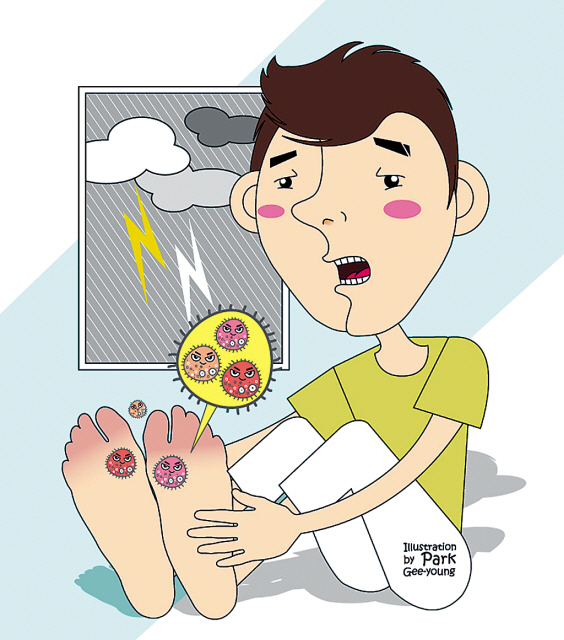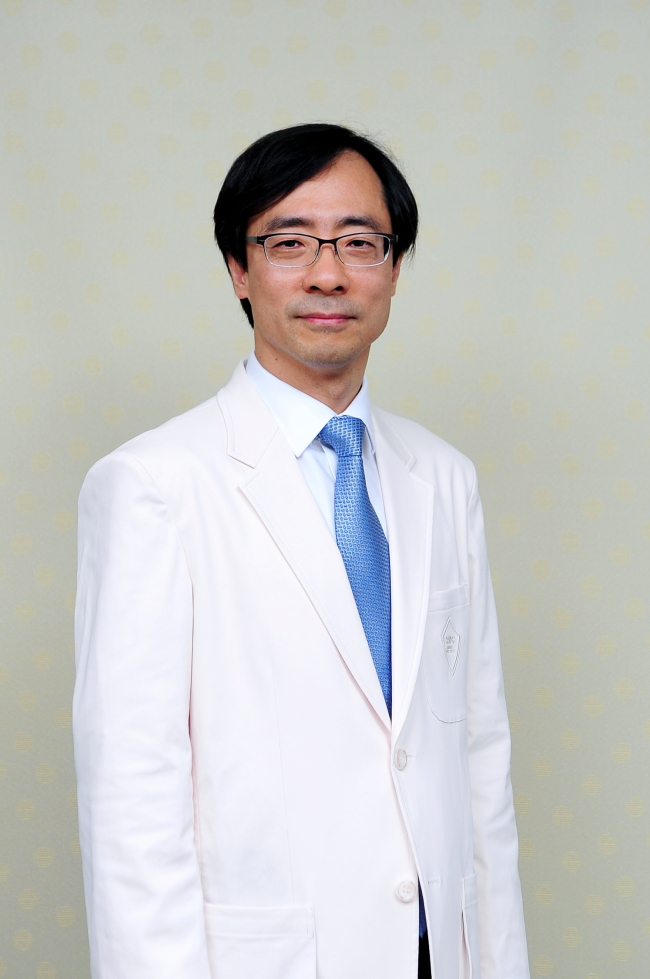
The warmth and the humidity allow the rapid growth of fungi and bacteria, which are why some skin conditions are more prevalent during the rainy season. We will now look into some common skin conditions which can develop during the rainy season.
Athlete’s foot
Athlete’s foot is common during the rainy season and in the summer time when the temperature and the humidity rise. During the early stages of the condition, the webbed skin between the toes can swell up and cause itchiness, but it is easy to treat at this stage. However, the condition becomes more difficult to take care of as the condition progresses.
The stratum corneum of the skin consists of protein keratin. Athlete’s foot is caused by group of fungi dermatophytes which use keratin as its source of nutrients. Dermatophytes break through the stratum corneum by contact to invade the skin layer. People who do not frequently wash their feet and leave microorganisms on their skin are more likely to be infected.
Athlete’s foot can be classified into different groups depending on the clinical symptoms. Some cause swelling and maceration or small blebs of the skin between the toes, while others can cause thickening and scaling of the skin on the soles.
Medications for the treatment of athlete’s foot are generally available in three different forms: aqueous solution, cream and ointment. Athlete’s foot which oozes discharge is usually treated using aqueous solutions, while those that cause scaly skin are usually treated with creams or ointments.
If there is a secondary skin infection following eczema or skin condition with athlete’s foot, it is difficult to treat with commercially available medications alone. It is advisable that you visit a dermatologist for the appropriate treatment. In some cases, you may need to take oral medications and topical medications. It is highly recommended that you seek medical help.
Tinea cruris
This condition presents redness and itchiness in the groins, which many people mistake for as sexually transmitted infections. Adolescents may worry about their parent’s finding out, so they tend to buy over-the-counter ointments which they can apply to the area that only worsens the condition. Men commonly believe that this is a chronic eczema of the groin, so patients sometimes continue applying eczema ointments to the area for several years before finally going to the hospital.
This condition is not eczema, nor is a sexually transmitted infection. Tinea cruris is caused by fungal infection of the skin. Fungi grow well in moist and warm areas which are not well ventilated.
The groin is ideal for the pathogenic fungi to grow in and also because of certain conditions. Once infected, it is difficult to treat. The same applies for the feet, which are covered by shoes most of the time. While people easily recognize Athlete’s foot, they often mistake tinea cruris of the groin as ezcema. The same fungus can infect the scalp to cause tinea capitis, or the body skin to cause tinea corporis. It is one of the skin infections which are difficult to treat.
Common medications for the treatment of eczema contain steroids, which can worsen the condition. Even if the correct treatment is applied, the condition can recur when the treatment is stopped. Therefore it is important that patients continue taking or applying the medications for four to six weeks, even if they experience initial regression of the infection. Obese or diabetic patients are prone to developing this infection and the condition is likely to recur more easily on these patients.
The condition is also worsened by inadequate drying of the area followed by washing. It is important that the groin is well ventilated and dry, so that it would be difficult for fungi to grow.

By Lee Joo-heung
The author is a professor of dermatology at Sungkyunkwan University School of Medicine and doctor at Samsung Medical Center.
-
Articles by Korea Herald











![[Today’s K-pop] BTS pop-up event to come to Seoul](http://res.heraldm.com/phpwas/restmb_idxmake.php?idx=644&simg=/content/image/2024/04/17/20240417050734_0.jpg&u=)





![[KH Explains] Hyundai's full hybrid edge to pay off amid slow transition to pure EVs](http://res.heraldm.com/phpwas/restmb_idxmake.php?idx=652&simg=/content/image/2024/04/18/20240418050645_0.jpg&u=20240419100350)

